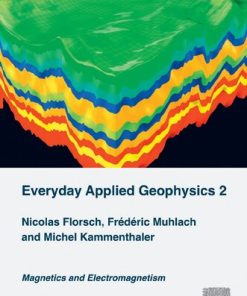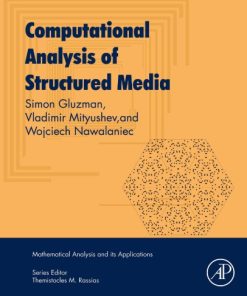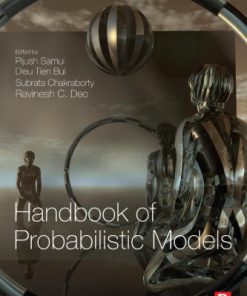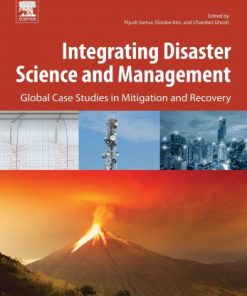Basics of Computational Geophysics 1st Edition
$50.00 Original price was: $50.00.$25.00Current price is: $25.00.
Basics of Computational Geophysics 1st Edition – Ebook Instant Download/Delivery ISBN(s): 9780128209011,0128209011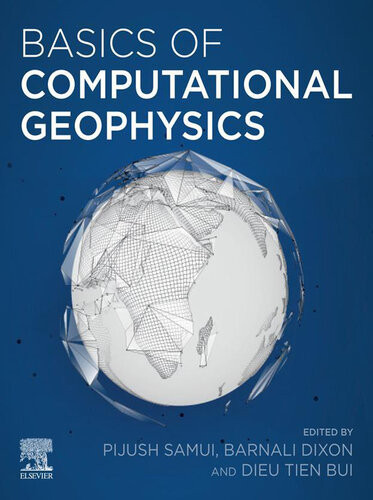
Product details:
- ISBN 10:0128209011
- ISBN 13:9780128209011
- Author: Pijush Samui, Barnali Dixon, Dieu Tien Bui
Basics of Computational Geophysics provides a one-stop, collective resource for practitioners on the different techniques and models in geoscience, their practical applications, and case studies. The reference provides the modeling theory in an easy-to-read format that is verified with onsite models for specific regions and scenarios, including the use of big data and artificial intelligence. This book offers a platform whereby readers will learn theory, practical applications, and the comparison of real-world problems surrounding geomechanics, modeling and optimizations.
Table contents:
Chapter 1. Synthetic ground motions of the October 8, 2005 Kashmir earthquake (Mw 7.6): An inference to the site response and seismic hazard of Kashmir basin, NW Himalaya
Chapter 2. Global particle swarm optimization technique in the interpretation of residual magnetic anomalies due to simple geo-bodies with idealized structure
Chapter 3. Emerging techniques to simulate strong ground motion
Chapter 4. Earthquakes: Basics of seismology and computational techniques
Chapter 5. Significance and limit of electrical resistivity survey for detection sub surface cavity: A case study from, Southern Western Ghats, India
Chapter 6. A review on geophysical parameters comparison in Garhwal and Kumaun Himalaya region, India
Chapter 7. Liquefaction susceptibility of high seismic region of Bihar considering fine content
Chapter 8. Evaluating the reliability of various geospatial prediction models in landslide risk zoning
Chapter 9. Fractals and complex networks applied to earthquakes
Chapter 10. Liquefaction as a seismic hazard: Scales, examples and analysis
Chapter 11. Landslide prediction and field monitoring for Darjeeling Himalayas: A case study from Kalimpong
Chapter 11. Landslide prediction and field monitoring for Darjeeling Himalayas: A case study from Kalimpong
Chapter 12. Improvement of shear strength of cohesive soils by additives: A review
Chapter 13. Static stress change from February 6, 2017 (M 5.8) earthquake Northwestern Himalaya, India
Chapter 14. Remote sensing for geology-geophysics
Chapter 15. Prediction of petrophysical parameters using probabilistic neural network technique
Chapter 16. Interpretation and resolution of multiple structures from residual gravity anomaly data and its application to subsurface mineralization
Chapter 17. On fractal based estimations of soil subsidence
Chapter 18. A neural network to predict spectral acceleration
Chapter 19. Prediction of Earth tide
Chapter 20. Time series analysis of hydrometeorological data for the characterization of meltwater storage in glaciers of Garhwal Himalaya
Chapter 21. Trends in frequency and intensity of tropical cyclones in the Bay of Bengal: 1972–2015
Chapter 22. Application of machine learning models in hydrology: Case study of river temperature forecasting in the Drava River using coupled wavelet analysis and adaptive neuro-fuzzy inference systems model
People also search:
how does geophysics work
what is geophysics all about
computational methods in geophysical electromagnetics
basics of geographic coordinate systems
computational geophysics
You may also like…
Science (General)
Earth Sciences - Geophysics
Earth’s Core: Geophysics Of A Planet’s Deepest Interior 1st Edition Vernon F. Cormier
Uncategorized
Computers - Programming
Adjustment Models in 3D Geomatics and Computational Geophysics: With MATLAB Examples 1st Edition
Computers - Artificial Intelligence (AI)
Fundamentals of Computational Neuroscience 3rd Edition Thomas Trappenberg
Earth Sciences




